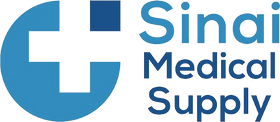The cost of medical supplies has been recognizing as one of the largest expenditures in most healthcare organizations’ budgets, second only to staffing costs. Managing a hospital’s supply chain is a significantly complex undertaking, anxious with opportunities for less inexpensive options at every step of the process. Decreasing the cost of supplies is a top preference for executives at all types and sizes of healthcare organizations.
With financial compulsion on healthcare organizations increasing, supply chain managers are making purchasing conclusions very carefully. The medical supply conclusion making process should examine the need for medical supplies, especially in the assumption of what is required, assess products, and plan for a careful introduction and storage for products. Hospitals can purchase supplies through a group purchasing organization or arrange directly with dealers or wholesalers, all of whom are doing a larger share of their business online.
Medical supply and an equipment producer, as well as distributors, have become more frequent online. Not only are major producer building websites available that promote product features, benefits, and images, but also detailed product identification as well. There are wholesale medical supply stores that sell to the public, and there are the national and regional benefit chain stores such as Walgreens, CVS, and Walmart.
In a hospital or nursing home, it is common to find patients who needs fluids or a medicine drizzle into their bloodstream by way of an endovenous bag, tube and needle, and a securement device.
The method is so common that some hospital supply teams have been gathering their own IV Start Kits for decades. Traders have been selling their own pre-packaged IV start kits for a while now too. These kits are used for the method of starting the IV in the patient. Some common supplies in this kit include:
Prep, scrub, alcohol pads, PVP ampule, Gloves, and a Securement device
Central Line Dressing Change Trays
Like IV Start Kits, there are pre-packaged trays that can be purchased with everything a nurse needs to change the dressing around a central line IV. Performing this procedure is important and very comprehensive work with the risk of a central line infection at stake.
Standard Procedures and General Purpose Procedures
Still primarily used by healthcare professionals on a patient, general-purpose method kits contain medical supplies that are used routinely in multiple methods. For example, general procedures include:
- Nosebleed procedures
- Chest tube placement
- Debridement
- Incision and drainage procedures
